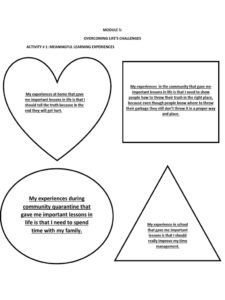 Home improvements are second most expensive purchases people make throughout their lives; directly behind the home itself. There are many different ways home improvements may be financed; unsecured personal loans, collateral loans, second mortgages, or even borrowing money from your self via a retirement account. Of these, the most common-and the most expensive-is the unsecured personal loan. For many, it is often the only way to finance home improvements. Such loans may be obtained from almost any bank or credit union and can also be conveniently arranged by the contractor who does the work or the supplier of the materials. It is advisable that after you have determined what the cost will be, to make your own arrangement directly with the financial institution, preferably one with which you carry a savings or checking account. Unsecured property improvement loans are usually made on the basis of discount rather than simple interest. For example, if you wish to obtain $1,000 for two years, an amount – commonly equal to 5 percent, or $50 a year – will be added to the amount and the total will be repaid in equal monthly installments over the period of the loan. This arrangement comes to something over 9 per cent simple interest, and is about the best that can be had for this type of financing.
Home improvements are second most expensive purchases people make throughout their lives; directly behind the home itself. There are many different ways home improvements may be financed; unsecured personal loans, collateral loans, second mortgages, or even borrowing money from your self via a retirement account. Of these, the most common-and the most expensive-is the unsecured personal loan. For many, it is often the only way to finance home improvements. Such loans may be obtained from almost any bank or credit union and can also be conveniently arranged by the contractor who does the work or the supplier of the materials. It is advisable that after you have determined what the cost will be, to make your own arrangement directly with the financial institution, preferably one with which you carry a savings or checking account. Unsecured property improvement loans are usually made on the basis of discount rather than simple interest. For example, if you wish to obtain $1,000 for two years, an amount – commonly equal to 5 percent, or $50 a year – will be added to the amount and the total will be repaid in equal monthly installments over the period of the loan. This arrangement comes to something over 9 per cent simple interest, and is about the best that can be had for this type of financing.
For those that do not have collateral may also obtain loans, The Federal Housing Administration insures lending institutions against losses on unsecured. For information about the FHA plan, visit your nearest FHA office, or visit www.fha.gov. Once you have gathered all information about the loan you will need, you will want to shop it around to many different banks. Many homeowners become worried at this phase. Most people believe that every time a credit check done, it will lower your score. In reality, this is not the case. Credit bureaus recognize these activities, and many credit pulls within in a two week time span will show up as a single ding on your credit and not many. The amount of money you could possibly save is well worth the small ding; generally only 1 point. Along the road, you will notice that many banks and savings and loan associations have their own terms which may slightly vary from those stated by FHA as bankers realize that the repair and improvement of real property conserve its value.
Federal savings and loan associations, for example, are permitted to make unsecured without FHA insurance. By posting collateral (stocks, bonds, or vehicles) as security for a loan, the charge will be on the basis of simple interest rather than a discount payment and may be much less in total amount. It is usually preferable to arrange for collateral financing rather than the unsecured type where possible to do so. The third method of financing is through your homes mortgage. If you are planning improvements in connection with the purchase of an existing house, it is wise to arrange to have their cost included in the same mortgage loan that is made to finance the purchase. The same rate of interest and repayment will be spread out over the same period as that of the rest of the mortgage loan. This is the most favorable financing of all. If you wish to make extensive improvements on a house you own, on which the mortgage has already been repaid, a new mortgage loan can usually be arranged to cover the cost. If the mortgage is not completely repaid, it may be possible to increase it to cover all or most of the improvement cost. This practice is called “open-ending” and is only possible if provisions were built into the original mortgage that allow you to do so. Whatever financing method you choose, make sure to do your homework on both the organization providing the work, and the organization providing the financing.






